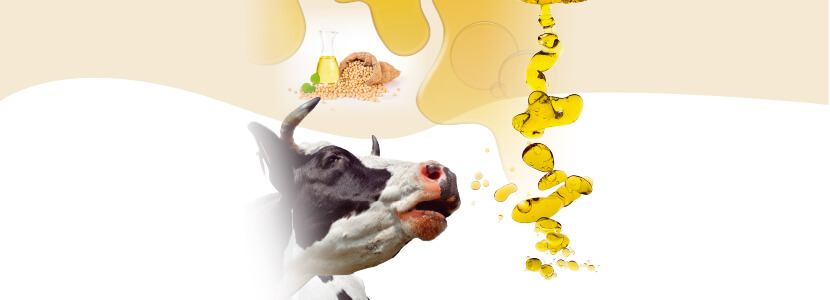Dietary fat and its influence on rumen microbiota.
This second entry, analyzes the results obtained by researchers in the in vivo trials previously mentioned. As well as delving in fat biohydrogenation with greater depth. A process that follows after lipolysis once fats are within the rumen, as it was previously described in the first entry.
Detoxifying adaptation-biohydrogenation
This process is considered as a detoxifying adaptation (Kemp et al. , 1984), and marginally contributes to the elimination of reducing equivalents produced by rumen fermentation (Lourenço, et al. 2010).
Biohydrogenation (BH) comprises several steps, depending on the USAFs, as well as several pathways, depending on diet and rumen environment (Griinari et al., 1998).
Protozoa encompass bacteria, and bacterial biohydrogenation can take place within protozoa (Jenkins et al., 2008) which explains their high concentrations of intermediate products (Devillard et al. , 2006).
In Vivo Studies
Beyond studies based on the selected isolates, in vivo trials have been carried out to evaluate the relationship between rumen bacteria and biohydrogenation. This has been done by adding bacteria and quantifying their products, or by adding dietary supplements known to affect BH and measuring bacterial abundance.
As a rule
- In vivo studies of dietary fat inclusion have shown that there are no changes or reductions in total and/or major protozoan genera.
Other observations ….
- Hristov et al., 2012 observed that lauric acid (C12:0) strongly decreased protozoan counts compared to myristic (C14:0) and stearic (C18:0) acids.
- In a more general way, Oldick and Firkins (2000) showed that increasing the degree of unsaturation reduces protozoan count. However, they emphasized that it can be difficult to assess such change due to individual variation, which explains the inconsistency of their trials.
Observations on archaeal community
Methanobrevibacter ruminantium
Studies with pure strains of archaea adding organic acids or saturated fatty acids evidenced an inhibition of methane production by Methanobrevibacter ruminantium.
- Lillis et al. (2011) demonstrated that the addition of soybean oil in vivo altered the count of methanogenic archaeans but not their diversity. They hypothesized that these changes can be a consequence of an altered VFA profile(less acetate and butyrate producing H2, and more propionic), due to changes in the bacterial community.
- Hristov et al. (2012) proposed that changes in the archaeal community could be linked to a reduction in protozoa abundance when using high-fat diets.
About linoleic acid ….
- In pure cultures, linoleic acid (LA) can affect the growth of the fungus Neocallimastix frontalis (Maia et al. , 2007).
- Boots et al. (2012) confirmed the negative effect of LA on the order Neocallimastigales through in vivo trials. These researcher observed that the richness and diversity of these fungi are diminished with the addition of soybean oil.
-
-
- The inhibitory effect of oils on bacterial growth has been studied extensively in pure in vitro cultures of rumen strains (Maia et al., 2007). Focusing on bacteria that play a role in fibrolysis, amylolysis, and fat metabolism.
-
Keep up to date with our newsletters
Receive the magazine for free in digital version REGISTRATION ACCESS
YOUR ACCOUNT LOGIN Lost your password?
